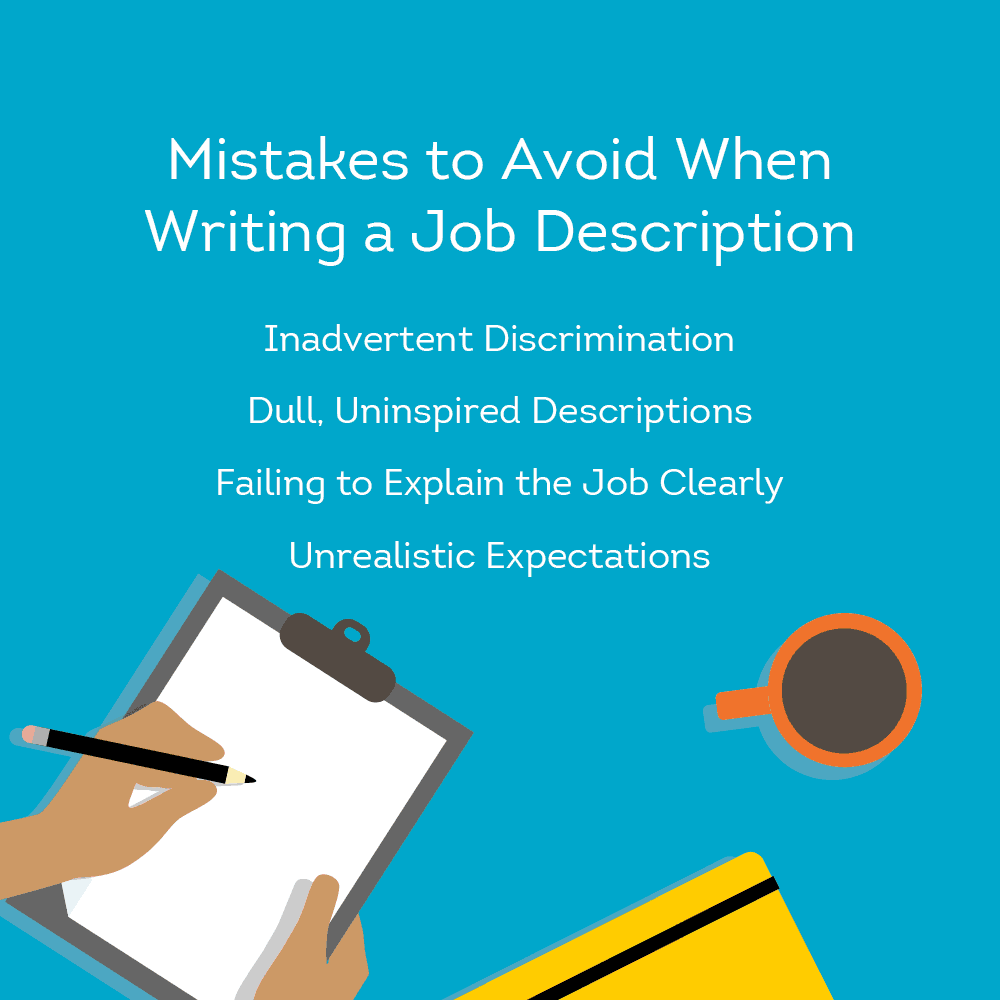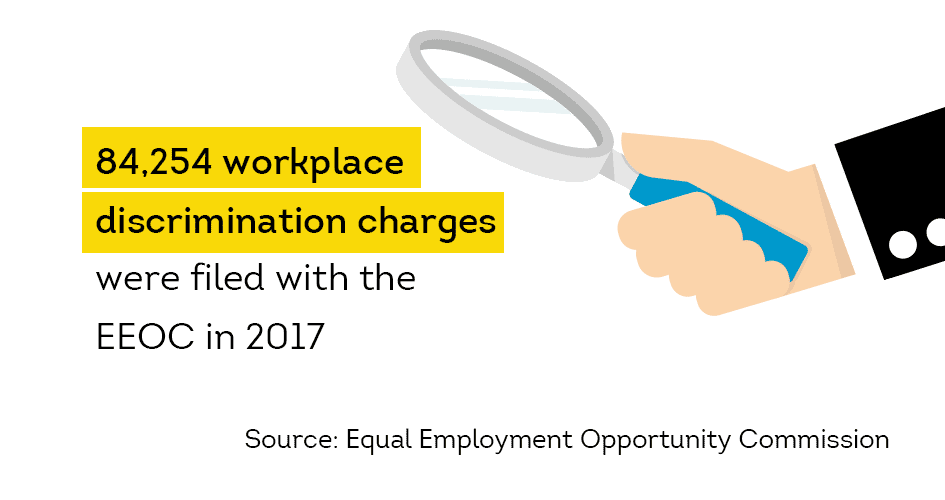Crafting an effective job description may seem like a simple task—that is until you actually have to sit down and write one. Remember, a job description is likely the first bit of information about your company that potential candidate sees when job searching. It’s the sizzle making someone want to bite into the steak that is the application process, and it’s the first part of a streamlined hiring process.
A good job description outlines the foundation of your small business. It should express who the company is, what it does, the role being filled and the ideal candidate who best suits the position and matches company culture.
As if drafting all of this information isn’t difficult enough, additional legal stipulations—such as avoiding discriminatory hiring practices—makes writing the correct job description even more important (and all the more stressful).
If your small business is entering a recruitment phase, then be sure to read through this guide on how to write a job description to help you attract the most-qualified applicants possible.
Pro-tip: One of the most important parts of the hiring process is pre-employment screening. Traditional tactics can require you to have specific credentials and take weeks of waiting. But thankfully, new online employee background checks like TransUnion ShareAble for Hires can provide near-instant insights into things like credit history, criminal records and ID verification. Once you narrow down your job applicant pool to the most promising people, screen online.
Components of a Job Description
1. Job Title
Be as specific as possible when listing the job title of your open position. For example, “Associate” can mean a number of things, whereas “Cashier” may be more universal. To potentially increase your pool of qualified candidates, consider using words that are commonly entered in job searches. Try to avoid whimsical titles, click-bait buzzwords, cliché fillers, and nontraditional or unique titles. Be sure to leave internal lingo out of your job title to avoid confusion.
2. Summary of the Position
Outline an overview of the expectations held for the position and describe the ideal person that would be a great fit. For example, “a motivated worker who enjoys a fast-paced environment and taking on new challenges as they arise”, would be an appropriate summary.
Follow the position summary with an overview of the company as a whole, including the goods or services you offer as well as your general mission statement. Consider adding accolades as well. For example, if your company was recognized as the “Best Place to Work” for the fifth year by your local Chamber of Commerce, then add it to the description. Include information that highlights company achievements that help show potential candidates your company is a great place to build a career.
3. Responsibilities of the Position
Describe the core duties and responsibilities of the position.Be concise and consider using bullet-point formatting to explain day-to-day activities the applicant would perform at work.Include the way this position functions within the organization as a whole.
By incorporating a detailed brief around the responsibilities of the position, you can help attract only qualified candidates and avoid wasting both your and the candidate’s time.
4. Qualifications and Skills
Clearly delineate what kind of requirements you are looking for in terms of background and experience necessary to adequately perform the role. This section lays out the “must-have” qualifications that applicants need to be considered for the position. Such requirements may include an accredited degree from a high school or university, a specified set of skills, and a certain number of years of experience. If a candidate lacks any of the requested details, then you might consider focusing on other, more qualified candidates.
For example, if you are hiring for a social media specialist position, then provide details that are crucial for the position in order to be successful, such as:
- Do you have 3+ years of professional social media experience?
- Are you familiar with (name of social media tool)?
- Do you know how to report on social media metrics?
5. Pertinent Details
Aim to make your job description 1,000 - 1,500 words, adding enough detail to give the candidate a clear idea of the position without overwhelming them with too much information. You may want to address who their supervisor will be, what department they’d be in and the positions with which they’d interact regularly. Consider supplying a salary range or hourly wage the candidate may expect to receive.
Additional details worth mentioning could include what makes the role and the organization unique, as well as a brief sense of the company’s future plans. Applicants may be more intrigued if they know what their role provides to the business and that there is potential for upward movement.
6. Company Benefits
If your company offers benefits, be sure to list them within the job description—this can be a great motivator and entice job seekers to apply.
Common company benefits include access to healthcare and a 401(k) retirement plan. You should also consider highlighting all of the relevant benefits specific to your company, such as paid-time-off, flexible hours, or a pet-friendly environment. This is your opportunity to showcase what sets your company apart from competitors.

Don’t forget to mention unique perks, such as an on-site gym, employee clubs, or office happy hours. Today’s applicants are looking for a great working environment as much as they’re looking for a rewarding position, so take your time to indicate what makes your workplace stand out.
7. Link to the Application
Make it easy for your candidate to apply for the job. Include an easy-to-find link to the application with a clear call to action, such as “Apply Here.” If you do not accept digital applications, then you may want to reconsider how you collect submissions since many applicants will be accustomed to applying online. If you decide to use offline means of collection, then include application instructions.
Pro Tip: Before submitting the finalized version of your job opening, be sure to double check any links that you may have incorporated within your content—there is nothing worse than leading your interested job seekers to a 404 error or inaccurate site page!
Mistakes to Avoid when Writing a Job Description

1. Inadvertent Discrimination
Discriminating against an applicant may be a crime, whether it’s done intentionally or inadvertently. Employment discrimination is generally prohibited by law and rigorously enforced by the U.S. Equal Employment Opportunity Commission (EEOC). Be absolutely certain to avoid this mistake within your job description.
Forms of employment discriminationlisted by the EEOC, include:
- Age
- Disability
- Equal compensation
- Genetic information
- Harassment
- National Origin
- Pregnancy
- Race/Color
- Religion
- Retaliation
- Sex
- Sexual Harassment
Listing any of the above characteristics within a job description could land you in hot water, so you should consider steering clear of these topics. Fact: Discrimination, whether done intentionally or not, can result in serious consequences. In 2017, 84,254 workplace discrimination charges were filed with the EEOC.

2. Lack of Personality
We mentioned earlier to refrain from the use of unconventional words, unfamiliar terms, or internal jargon within your job description, but that doesn’t mean it needs to be void of personality altogether. Make sure your listing reflects your company’s ethos and personality and gives potential candidates a clear enough vision about the kind of culture where they’d be working. If you’re a legal firm, then your description will likely be more tight and free of any slang. If you work for an advertising agency, then the language you use in the office may be reflected in your posting.
3. Unclear Description
Failing to explain a job clearly can waste a significant amount of everyone’s time and your company’s money:
If you’re paying to host your job description on a recruitment site, then you need to make sure you’re getting your money’s worth. However, if you have written a vague and ambiguous job description, then you might not attract the kinds or quantities of applicants you desire.
When a candidate applies and is invited to interview based on an unclear job description, it could lead to an unproductive use of time for both parties. And, if you end up hiring an applicant who applied for your job based off of an unclear explanation, then you could spend a significant amount of time training your new employee just to find out they aren’t cut out for the role. Even worse, this could eventually result in a resignation and/or termination. Employee turnover is costly, with turnover averaging over $4,000 per hire.
4. Unrealistic Expectations
Don’t set unrealistic expectations for job candidates. Consider the must-have requirements and determine what can be learned on the job. If you set impossibly high standards for a potential employee, you may lose out on otherwise wonderful candidates who could become true assets to your organization.
GlassDoor proposes that employers consider whether they are too picky in these three areas of hiring strategy:
- Education: If you immediately disqualify candidates without particular degrees, then you narrow your pool of applicants. Degree doesn’t always translate to competency—candidates without particular degrees or designations may prove to be valuable employees.
- Experience Vs. Potential: You may be focused on finding employees who have experience that matches the open role. However, it’s important to consider green employees who can quickly learn and develop the necessary skills for that position.
- Industry Vs. Skillset: Don’t silo your hiring efforts; consider applicants from other industries that may have transferable skills. For example, an applicant that comes from a service industry background may prove an excellent salesman thanks to well-honed people skills.
A Great Job Description Won’t Outweigh a Great Screening Process
After crafting your perfect job description, make sure you screen preferred job candidates with a convenient, effective online pre-employment background check. ShareAble for Hires offers employers the opportunity to gather the information needed to make a confident hiring decision.
By inviting your job applicant to allow the sharing of their information, ShareAble for Hires delivers trusted pre-employment screening reports from TransUnion, in mere minutes. From credit checks to criminal backgrounds to ID verification, ShareAble for Hires allows small businesses to make big hiring decisions based on crucial data.
With immediate access to pre-employment screening, you gain critical insights as ShareAble for Hires:
- Verifies ID through TransUnion
- Checks Sex Offender Registry
- Checks National Most Wanted
- Checks Federal Terror Watch List
- Checks State & County Criminal Records
- Adheres to all Federal Credit Reporting Rules
- Checks for Use of Deceased Person’s SSN
- Matches Name to SSN
- Reports Current & Previous Addresses
- Runs Detailed Credit Report
Good hires start with the job description and continue with the background check. Screen with ShareAble for Hires today and start staffing up with top candidates.







